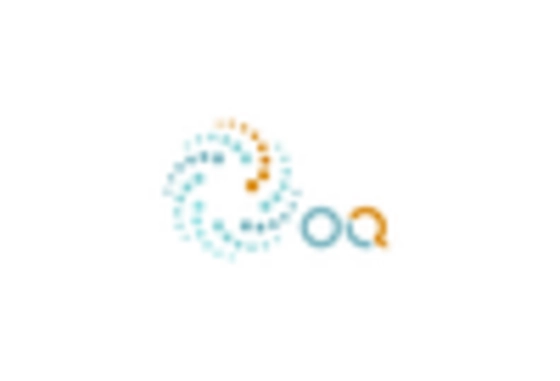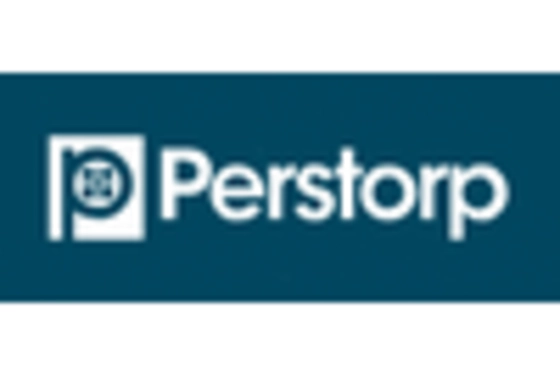Growing Demand for Biofuels
The Butyric Acid Derivative Market is also influenced by the growing demand for biofuels. Butyric acid derivatives can serve as potential feedstocks for the production of biofuels, aligning with the global shift towards renewable energy sources. The biofuel market is projected to expand significantly, with an anticipated growth rate of around 7.5% in the coming years. This trend is driven by the need to reduce greenhouse gas emissions and reliance on fossil fuels. As governments and industries increasingly prioritize sustainability, the incorporation of butyric acid derivatives into biofuel production processes may become more prevalent, thereby enhancing the overall growth of the Butyric Acid Derivative Market.
Increasing Use in Animal Feed
The Butyric Acid Derivative Market is significantly influenced by the rising use of these derivatives in animal feed. Butyric acid derivatives are known to enhance gut health and improve feed efficiency in livestock, which is crucial for the growing global demand for meat and dairy products. The animal feed segment is projected to account for a substantial share of the market, with an expected growth rate of around 4.8% annually. This trend is further supported by the increasing awareness of animal welfare and the need for sustainable farming practices. As livestock producers seek to optimize animal health and productivity, the incorporation of butyric acid derivatives into feed formulations is likely to become more prevalent, thereby bolstering the Butyric Acid Derivative Market.
Rising Interest in Natural Preservatives
The Butyric Acid Derivative Market is benefiting from the rising interest in natural preservatives within the food sector. As consumers become more health-conscious, there is a growing demand for food products that are free from synthetic additives. Butyric acid derivatives, known for their antimicrobial properties, are increasingly being utilized as natural preservatives in various food applications. The market for natural food preservatives is expected to grow at a rate of approximately 6.1% over the next few years, driven by consumer preferences for clean label products. This shift towards natural ingredients is likely to enhance the demand for butyric acid derivatives, positioning them as a key player in the Butyric Acid Derivative Market.
Technological Advancements in Production
Technological advancements in the production of butyric acid derivatives are poised to drive the Butyric Acid Derivative Market forward. Innovations in fermentation technology and bioprocessing are enabling manufacturers to produce these derivatives more efficiently and sustainably. The adoption of green chemistry principles is also gaining traction, which may lead to reduced environmental impact during production. As production costs decrease and efficiency improves, the market is likely to see an influx of new players and increased competition. This dynamic environment could foster further innovation and diversification of product offerings within the Butyric Acid Derivative Market, ultimately benefiting consumers and businesses alike.
Expanding Applications in Pharmaceuticals
The Butyric Acid Derivative Market is experiencing a notable expansion due to its increasing applications in pharmaceuticals. Butyric acid derivatives are recognized for their therapeutic properties, particularly in treating gastrointestinal disorders and inflammatory diseases. The market for these derivatives is projected to grow at a compound annual growth rate of approximately 5.2% over the next five years. This growth is driven by the rising prevalence of chronic diseases and the demand for effective treatment options. Pharmaceutical companies are increasingly investing in research and development to explore the potential of butyric acid derivatives, which may lead to innovative drug formulations. As a result, the Butyric Acid Derivative Market is likely to witness a surge in demand, reflecting the broader trend of integrating natural compounds into modern medicine.


















Leave a Comment